Colombia study sees improvements in growth, survival of juvenile red tilapia
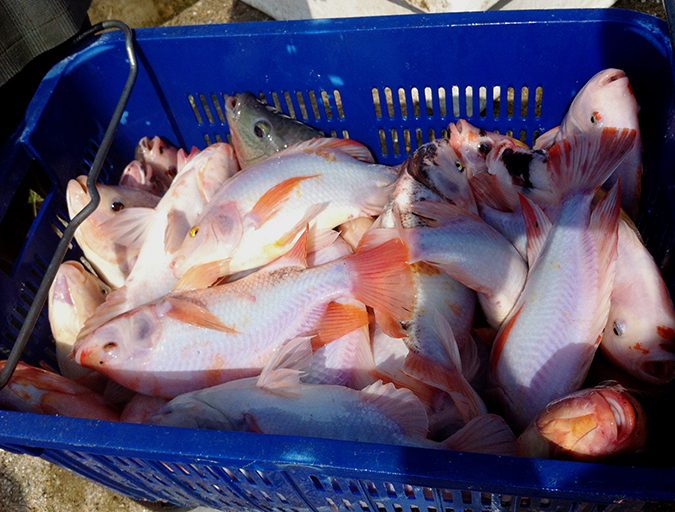
Production of farmed tilapia has grown rapidly in the 140-plus countries around the world where the fish is grown commercially. Global production exceeded 5.5 million metric tons in 2015, an increase of more than 19 percent in only two years. Such an achievement is only possible due to high-quality fish feeds.
However, this significant aquaculture production is prone to suffer from bacterial diseases – a major cause of economic loss to producers. Antibiotic-medicated feeds have become common practice to treat bacterial infections, such that regulatory authorities in most exporting countries are focusing on the misuse of antibiotic growth promoters (AGP) in aquaculture.
Public attention has also shifted in recent years towards more sustainable and responsible production methods, creating a consumer-driven demand for change. Testing alternative feed additives to replace AGPs has shown various possible alternatives that involve environmentally friendly and nutritionally sustainable aquaculture approaches.
One of the more promising additives is the group of organic acids, particularly organic acid salts. Potassium diformate (KDF) – the most widely tested organic acid salt in the aquaculture industry – has been now used successfully for over a decade in tilapia feeds. Numerous publications and conference contributions on the use of KDF in juvenile tilapia from Europe, America and Asia have been published. Unfortunately, data on the use of KDF in aquaculture operations in Latin America is limited, despite its successful and widespread use since at least 2012.
Tilapia farming in Colombia
Tilapia is a very important species for the aquaculture industry in Colombia, along with trout, various Amazonian species of fish, and, to a lesser extent, shrimp. The country is only second to Honduras in the export of fresh tilapia fillets to the U.S. market. Both Nile and red tilapia hybrids were introduced several years ago, and both are cultured at many levels, from artisanal to industrial, using pond and cage culture technologies in artificial water reservoirs such as in Betania.
Colombia produces around 70,000 metric tons of farmed tilapia annually, and a significant portion is exported as fillets, mainly to the United States. The main production areas include the departments of Huila, Tolima, Santander, Meta, Antioquia and Valle del Cauca, which contribute approximately 75 to 80 percent of total national production. Pond production is 30-50 ton/ha/year at stocking densities of 6 to 8 kg/square meter. In floating cages in artificial reservoirs, a locally-developed system produces up to 150 fish/cubic meter or 50 kg/cubic meter.
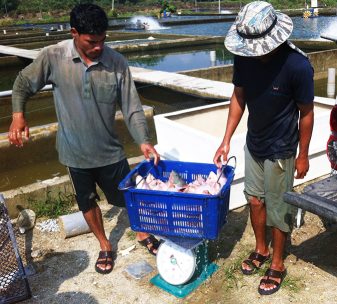
Study setup
A study conducted at a commercial farm in Huila, Colombia, tested the effects of dietary potassium diformate (KDF, commercially available as Aquaform) on the performance of juvenile red tilapia. A total of 181,000 fish were divided across six small ponds, with a total pond area of 3.5 hectares (ha). Three ponds served as a negative control, using a regular commercial diet, while fish in the other three ponds were fed with the same commercial diet containing 0.2 percent KDF. Fish were fed for at least 145 days to market weight, following established, commercial production standards.
The average impact of the additive on performance parameters – like weight gain, feed efficiency and mortality – were measured and the overall productivity (cost of weight gain in USD/kg) and fish productivity index (FPI) were calculated. FPI was calculated as follows:
FPI = weight gain [g] × survival [%] / (FCR × 10)
This calculation combines the three most important parameters in any animal production units, and is therefore a useful parameter to assess the economic success of an intervention in a commercial aquaculture setting.
Lucien-Brun, brine, Table 2
| Mass of salt (%) per 100 kg of water | Mass of salt (%) per 100 kg of brine | Density at 15 degrees-C; Baumé degrees | Density at 15 degrees-C; Density (Kg/dm3) | Freezing point (degrees-C) |
|---|---|---|---|---|
| 0.1 | 0.1 | 0.1 | 1.000 | 0.0 |
| 1.5 | 1.5 | 1.6 | 1.010 | -0.8 |
| 3.0 | 2.9 | 3.0 | 1.020 | -1.7 |
| 4.5 | 4.3 | 4.3 | 1.030 | -2.7 |
| 5.9 | 5.6 | 5.7 | 1.040 | -3.6 |
| 7.5 | 7.0 | 7.0 | 1.050 | -4.6 |
| 9.0 | 8.3 | 8.3 | 1.060 | -5.5 |
| 10.6 | 9.6 | 9.6 | 1.070 | -6.6 |
| 12.3 | 11.0 | 10.8 | 1.080 | -7.8 |
| 14.0 | 12.3 | 12.0 | 1.090 | -9.1 |
| 15.7 | 13.6 | 13.2 | 1.100 | -10.4 |
| 17.5 | 14.9 | 14.4 | 1.110 | -11.8 |
| 19.3 | 16.2 | 15.6 | 1.120 | -13.2 |
| 21.2 | 17.5 | 16.7 | 1.130 | -14.6 |
| 23.1 | 18.8 | 17.8 | 1.140 | -16.2 |
| 25.0 | 20.0 | 18.9 | 1.150 | -17.8 |
| 26.9 | 21.2 | 20.0 | 1.160 | -19.4 |
| 29.0 | 22.4 | 21.1 | 1.170 | -21.2 |
| 31.1 | 23.7 | 22.1 | 1.180 | -17.3 |
| 33.1 | 24.9 | 23.1 | 1.190 | -11.1 |
| 35.3 | 26.1 | 24.2 | 1.200 | -2.7 |
| 35.7 | 26.3 | 24.4 | 1.203 | 0.0 |
Results
The addition of KDF in the diet led to an improved weight gain of more than 5 percent, whereas due to the slightly lower initial weight of the fish in the negative control group, the additive even achieved an improvement in daily growth rate of 11 percent (Table 1). This rapid increase in growth meant that the culture period to harvest was reduced by nine days on average, and supporting a more efficient use of the production infrastructure.
Previously reported effects of KDF on feed conversion as well as protein efficiency ratio were also observed in our trial. The feed conversion rate (FCR) improved from 1.61 to 1.53, an enhancement of 5 percent. This notable improvement in feed efficiency was the main driver of the reduced cost of weight gain of more than $0.03 per kg. The calculated fish productivity index showed a value enhanced by almost 13 percent, mainly driven by the improved FCR and the considerably lower mortality (19 percent).
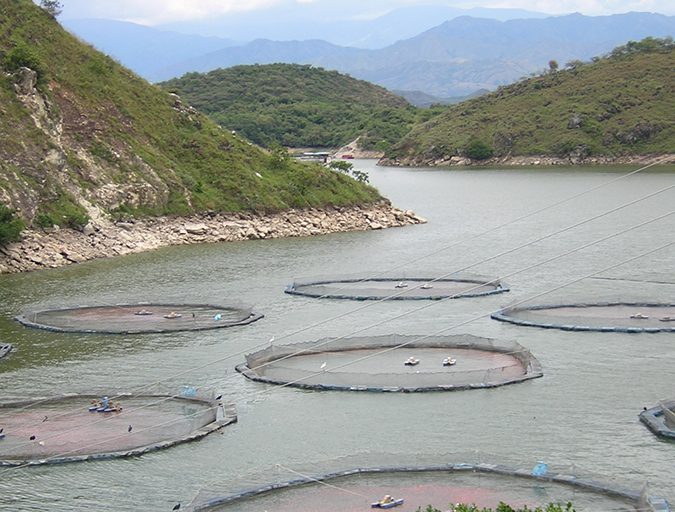
Perspectives
Overall, the results of this commercial trial show substantially better growth and FCR in juvenile red tilapia fed with dietary KDF, leading to an improved overall productivity. These findings are in general agreement with published trials from studies in Africa, Asia and the United States. We attribute the improved survival rates to the use of KDF in the diet and the additive’s impact on bacterial pathogens (e.g. Vibrio or Aeromonas).
Increased use of KDF as a feed additive in tilapia aquafeeds in Latin America could make a significant contribution to improve farmed tilapia production, and contribute support to a more responsible and sustainable tilapia production industry.
Authors
-
Dr. Christian Lückstädt
Technical Director FEED
ADDCON GmbH
Joseph-Schumpeter-Allee 25
D - 53227 Bonn, Germany[109,111,99,46,110,111,99,100,100,97,64,116,100,101,97,116,115,107,99,101,117,108,46,110,97,105,116,115,105,114,104,99]
-
Nicolas Greiffenstein
Technical Application Manager for Latin America
ADDCON GmbH
Calle 160 # 57-70, Bogotá, Colombia[109,111,99,46,110,111,99,100,100,97,64,110,105,101,116,115,110,101,102,102,105,101,114,103,46,115,97,108,111,99,105,110]
Tagged With
Related Posts
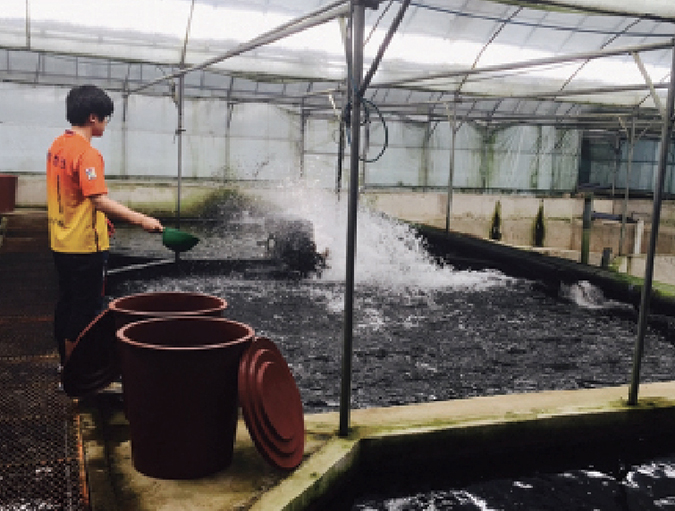
Aquafeeds
Natural feed additives enhance rainbow trout performance
Various additives, many of plant origin, have been explored to replace the use of antibiotics in aquafeed. The authors compared the performance of rainbow trout fed diets containing oxytetracycline or mineral additives yellow loess and Song-Gang stone powder.
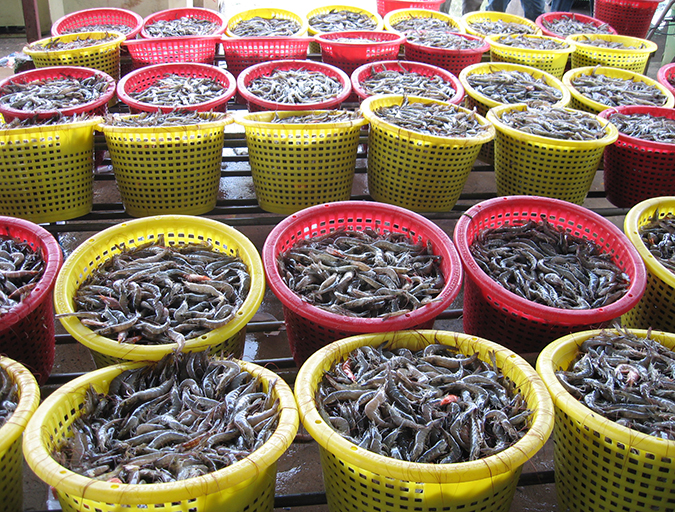
Aquafeeds
Microencapsulated organic acids aid shrimp culture
A novel blend of organic acids (OAB) microencapsulated in a lipid matrix and supplemented in the diets of Litopenaeus vannamei enhanced their growth, phosphorus utilization, resistance to Vibrio harveyi and immunity. This may have implications as an eco-friendly prophylactic strategy.
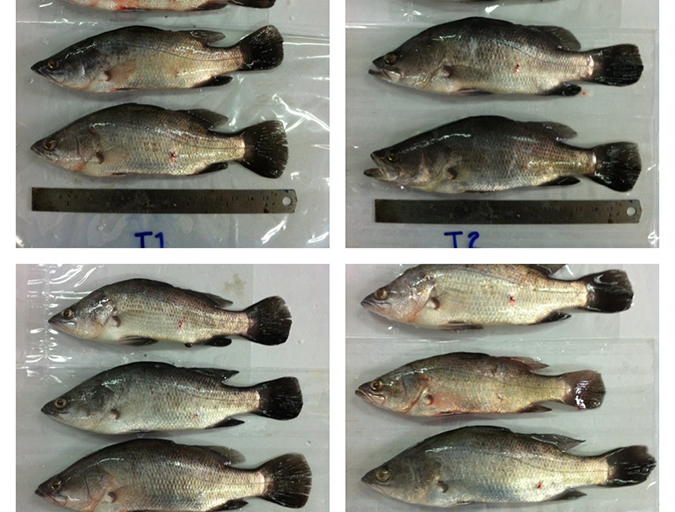
Aquafeeds
Improving productivity, efficiency in Asian sea bass aquaculture
The effects of the dietary acidifier and feed additive potassium diformate (KDF) were tested in diets of juvenile Asian seabass (Lates calcarifer) in Thailand. Results show that including KDF at 0.5 percent in the diets can help improve growth, survival and therefore overall production of this species.
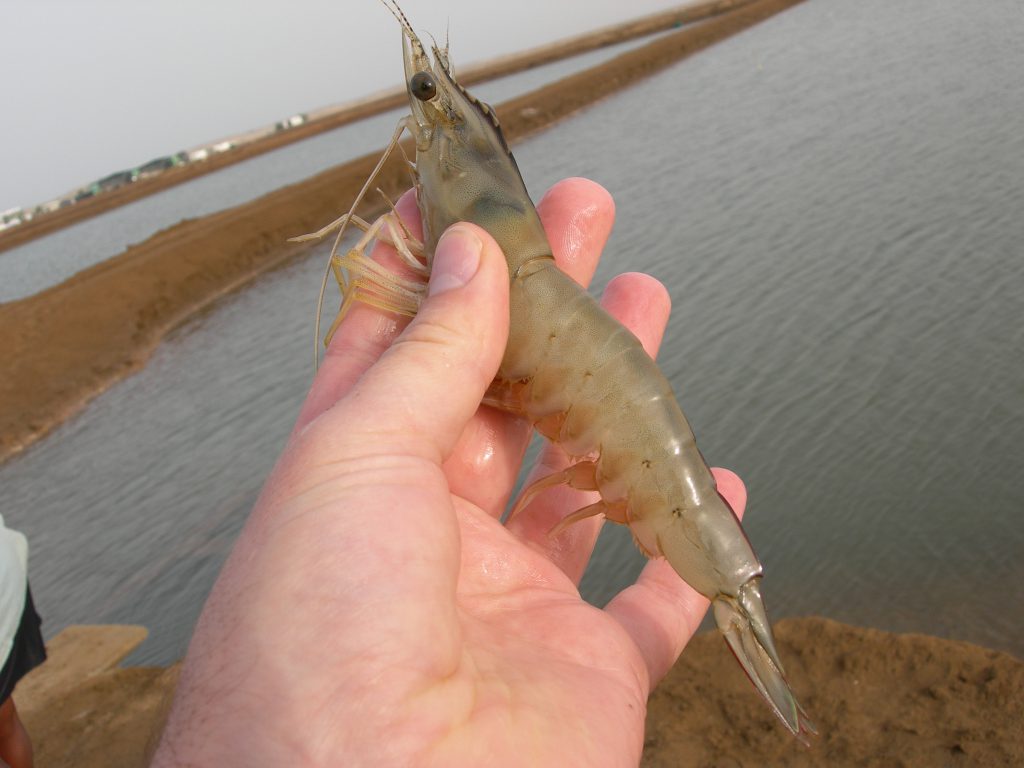
Health & Welfare
Focus on gut health increases aquaculture productivity
Increased attention to nutrient digestibility and gut health are two important focus areas for technological development of manufactured feeds in the aquaculture industry. Both laboratory and field studies have demonstrated the potential benefits for aquaculture productivity and the economics of specific feed additives developed to stimulate the establishment of a healthy gut microflora.


